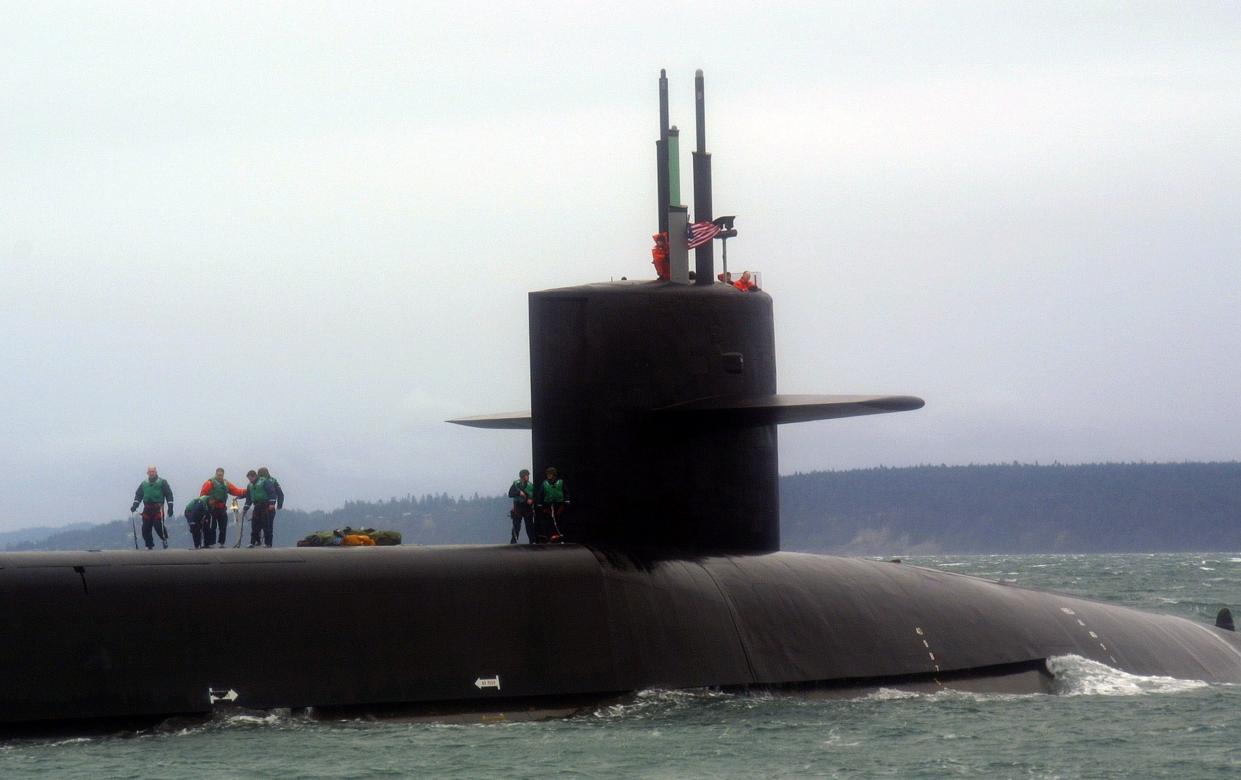US Navy developing new sea-launched nuclear missile

The United States Navy has begun developing a new sea-launched nuclear missile to compete with China, despite pushback from the Biden administration.
The Pentagon’s nuclear agency issued a notice on Friday announcing its intention to pay an American defence contractor to begin research and development work on the weapon.
Once complete, in the mid-2030s, the cruise missile will be the first of its kind to be operated by the United States since the Cold War.
It is designed to compete with the nuclear weapons programmes of Russia and China, which have both been developing mid-range atomic weapons that could be deployed on the battlefield.
The missile will be capable of launching from an attack submarine or a US Navy surface warship, and will have a shorter range than the ballistic missiles stored on Trident submarines or on land.
The project previously faced opposition from the Biden administration, which requested to defund the programme in the last defence budget.
The administration argued that the role of sea-launched nuclear cruise missiles could be fulfilled with existing weapons, and that the warheads alone would cost $31 billion (£24 billion).
Republican congressmen launched an attempt to retain the project and successfully added it back into the budget passed in March.
American public spending rules require the government to spend money in the way Congress demands.
The construction of the new missile follows plans for some Western countries to bring nuclear weapons out of storage.
Nato ‘will remain a nuclear alliance’
In an interview with The Telegraph on Monday, Jens Stoltenberg, the secretary general of Nato, said member states “need to consult on these issues”.
“Nato’s aim is, of course, a world without nuclear weapons. But as long as nuclear weapons exist we will remain a nuclear alliance, because a world where Russia, China and North Korea have nuclear weapons, and Nato does not, is a more dangerous world,” he said.
The decision to award a contract to begin research and development on a sea-launched cruise missile comes after lengthy debate on Capitol Hill about the merits of the project.
In 2022, Admiral Charles Richard, then responsible for the Pentagon’s nuclear weapons command, said that the missile was “necessary to enhance deterrence and assurance.”
“The current situation in Ukraine, and China’s nuclear trajectory, have further convinced me that a deterrence and assurance gap exists,” he said.
One possible use for the missile would be in a future conflict in the Taiwan Strait, where Xi Jinping has instructed the Chinese military to be prepared for a ground invasion by 2027.
China has one of the fastest-growing nuclear stockpiles in the world and is thought to be developing more “tactical” nuclear weapons to be deployed on the battlefield without sparking a full-scale nuclear war.
The Stockholm International Peace Research Institute, a Swedish think tank, warned on Sunday that China’s stockpile of ballistic missiles could eclipse the United States and Russia by 2030.
Russia has repeatedly threatened to use its own tactical nuclear missiles in Ukraine. Last month, Vladimir Putin ordered troops to begin nuclear weapons drills in response to “threats” from the West.
The United States first deployed sea-launched nuclear cruise missiles in the mid-1980s, and withdrew them by 1993 at the end of the Cold War. The remaining missiles were placed into storage, and retired by the US Navy in 2013.
Plans to resurrect the capability were proposed by Donald Trump’s administration five years later, arguing that the missiles would allow the country to have a “non-strategic regional presence” that would address the “need for flexible and low-yield options.”
Despite opposition from Mr Biden’s administration, Pentagon officials confirmed in April that the “analysis phase” to produce the missiles had begun.


